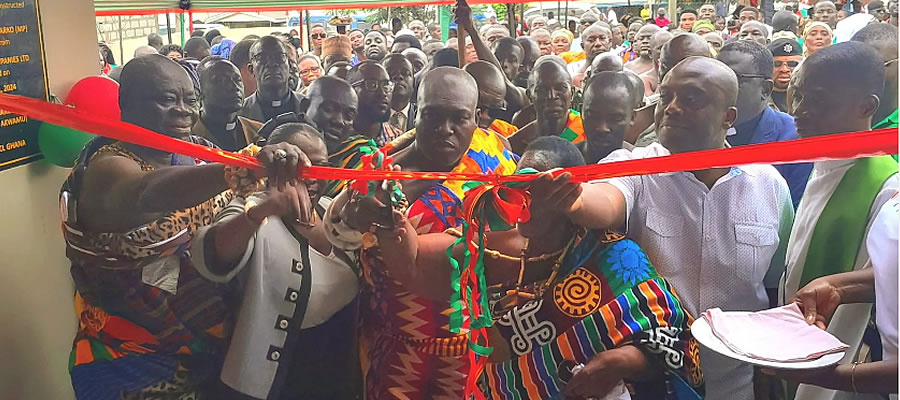

Introduction
The District Assemblies having assume full responsibility as Planning Authorities in their area of operation are not only to formulate Plans but also to implement and evaluate such plans. The agencies of the district assemblies together with the decentralised departments of the Assemblies are to be responsible for the day to day running of projects and programme it pursue. In effect they are suppose to measure and assess the impact such projects have on the lives of the citizen of their districts. To a great extent the level of success of these projects will greatly living on resources financially, human material available.
These resources need to be mobilised from both within and without of the District. In this direction the district is encouraged to source for funds from NGOs and other agencies but much of the emphasise needs to be pin on developing its own revenue base in order to be self reliant. It’s Project Implementation Strategies.
Implementing Agencies
In the implementation process a number of organisations, departments, agencies and individuals will have specific and definite roles to play in for the Assembly to successfully implement its projects and Programme.
District Assembly/District Administration
It is important to stress that the implementation of this plan is the collective responsibility of the ADA together with the various agencies and departments under the kingship of the Executive Committee of the District Assembly. The human and technical resource available as well as the Works Department and the PWD of the Assembly should be tapped to ensure the success of all the projects to be implemented.
The existing organisational structures of the District Assembly would serve as the institutional machinery for the implementation of the programmes and projects detailed out in the plan. It is therefore necessary to ensure the establishment of all the sub-committees of the District Assembly and to make them functional and effective in the Performances of the responsibility.
This calls for strengthening the capacity of committees’ members through the District Plan. The various committees should be properly educated on the relevant portions of the plan which falls under their responsibility. It is therefore necessary for the committee members to understand the basis of certain decisions that is rational behind the selection of Projects timing and procedures for implementation, monitoring and evaluation strategies. Among the main function to be performed by the District Assembly to ensure successful implementation of projects in the District are
- Funds generation for selected projects
- To set up the amount of reference and logical framework for co-ordination among the implementing agencies and institutions.
- Identification and rectification of legal and administrative bottleneck that the tent to inhibit smooth implementation of problems.
- Creation of and enable environments to attract investor in the District
- Periodic review of the plan implementation where necessary and self changing
NGOs/ Donor Communities/Private Sector
Currently there is limited NGO activity in the District. It is expected that the District Assembly will embark on an aggressive investment drive, to attract NGOs and private sector investors into the District. Again the Assembly should market itself to attract Central Government poverty alleviation Programme.
Communties
Community Participation as an integral part of plan implementation process because, the plan prefer the collective Vision of the people in the District and it is imperative they are involved in the implementation process. Where possible individuals should be allow to contribute both financial, material and human resources depending on the capability.
Criteria for the Phasing Of Plan
In locating specific projects the following were taken into considerations.
- Completion of ongoing projects
- Projects which provide the necessary condition and infrastructure for other direct production activities to take off.
- Project which fall in line with prioritised national and district Goals
- Emergencies that require immediate action
Justification for Choice of Annual Plan Location
The specific location of projects is done taking into consideration the following
- Need or deprived areas in terms of services, accessibility and economic interaction
- Access to depressed areas where the production of agro-based raw materials can be improved
- Areas with the necessary threshold population
- Areas with the capacity to ensure high returns to investment
- Areas which are centrally located to make information flow and sharing of project benefits cost effective.
- Communities with a proven capacity for self-help and initiative
Selection of Implementation Agencies
Implementation agencies were chosen according to the following criteria.
- Existing and expected functions
- Ongoing and planned projects by the agency in question
- Expertise in the relevant projects
Cost Sharing and Sources of Funding
The major sources of funding for the plan are listed as follow:
- District Assembly locally generated revenue
- Central Government Grants including the District Assembly Common Fund.
- Central Government Grant To Decentralised Departments
- Central government Direct Projects
- NGOs
- Donor Agencies
- Local Communities
Projected Revenue for the Plan Period
The total Projected Revenue for the Plan period is 12,790,567 million. In order to arrive at estimated revenue for the plan period, revenue projections were made for the years 2001-2005.
Date Created : 11/23/2017 4:31:22 AM












 facebook
facebook
 twitter
twitter
 Youtube
Youtube
 +233 593 831 280
+233 593 831 280 0800 430 430
0800 430 430 GPS: GE-231-4383
GPS: GE-231-4383 info@ghanadistricts.com
info@ghanadistricts.com Box GP1044, Accra, Ghana
Box GP1044, Accra, Ghana